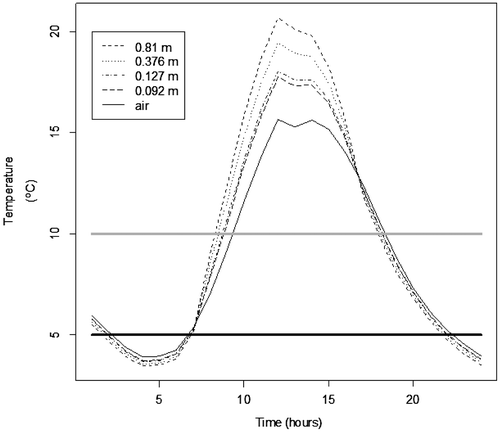Figures & data
Table 1. The monthly mean air and soil temperatures for December or January 2009 to 2014 in the data sets used in the models
Figure 1. Hourly air temperature for 9 January 2010 compared to the estimated body temperature of Burmese pythons arranged in a coil of varying dimension exposed above ground to ambient conditions on the same date. Body temperature is dependent on size as the energy balance is dominated by solar short-wave radiation.


